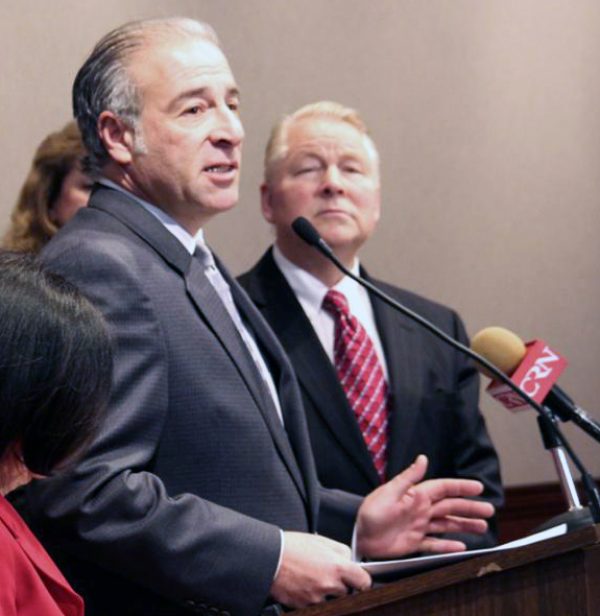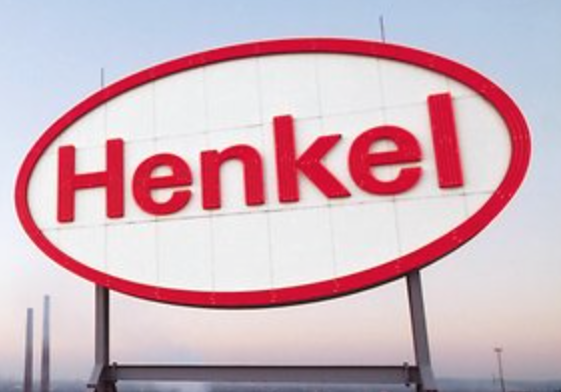Bringing tolls back to Connecticut highways may not inspire hosannas from residents, but state Rep. Tony Guerrera thinks it”™s an idea whose time has come.
“The benefit is bringing more revenue into the state,” Guerrera, a Democrat, who chairs the state”™s Transportation Committee, told the Business Journal. “And it”™s not just the people who live here. People driving back and forth from New York to Boston use our highways. They don”™t necessarily pull over to use our gas but they use our roads.
“We have one of the highest gas taxes in the nation already,” Guerrera said. “Something”™s got to give.”
According to the American Petroleum Institute, Connecticut”™s gas tax of 39.85 cents in January was the sixth highest in the country ”“ lower than neighboring New York”™s 43.88 cents but considerably higher than Massachusetts”™ 26.54 cents. The national average is 31.04 cents.
Every other state in the Northeast uses some kind of toll system, which Guerrera said underscores his belief that residents and visitors alike, despite some grumbling, will acclimate to the idea.

“We need revenue for our infrastructure to maintain and improve our roads, bridges and so on,” Guerrera said. “There has been this perception that the gas tax would always be replenished, but that”™s not the case anymore. GM and Ford say that half of their fleets will be electric or hybrids in another few years.”
In January, Ford CEO Mark Field said, “Our investments and expanding lineup reflect our view that global offerings of electrified vehicles will exceed gasoline-powered vehicles within the next 15 years.” The automaker announced a $4.5 billion investment in electric vehicles in 2015.
Earlier this month, research firm Technavio said the global high-performance electric vehicle market is expected to grow at a compound annual growth rate of nearly 38 percent through 2021.
“You and I aren”™t going to be going to the gas pump once or twice a week anymore ”“ if ever,” Guerrera said. “So what do we do for revenues?”
The lawmaker”™s solution is a network of all-electronic tolls, rather than the old-fashioned booths with human operators, patterned after the E-ZPass system familiar to drivers on the Massachusetts Turnpike or highways and bridges in New York state. That way, Guerrera said, “you go right on through at 60, 65 miles per hour without slowing down. The system reads your (electronic) tag or, if you don”™t have one, sends you a bill.”
Connecticut has $3 billion-plus in transportation infrastructure needs, he said, adding that some estimates indicate the state could bring in as much as $600 million per year with tolls at key points along its borders.
Where such tolls would be installed remains uncertain, as does whether or not to include congestion pricing that would cost commuters more during weekday rush hours, holidays and other heavy traffic occurrences. After all, Guerrero said, the toll question is still very much to be decided; a public hearing is set before the Transportation Committee on Feb. 27.
In the meantime, Guerrera points to a report by a transportation finance panel appointed by Gov. Dannel P. Malloy last year to study ways to implement Malloy”™s proposed 30-year, $100 billion transportation program. That report stated that tolls could raise as much as $18.3 billion by 2040, including 24 percent paid by heavy trucks and 30 percent by out-of-state drivers.
The panel also suggested several locations for placing tolls, including:
- Interstate 84 from Hartford to New York.
- I-95 between the Rhode Island and New York borders.
- Four bridges in the vicinity of the Connecticut River in the Greater Hartford area.
- The interchange of I-91, I-691 and Route 15 in Meriden.
Arguments against tolls are already being heard, led in part by Transportation Committee Co-chair Sen. Toni Boucher, a Republican whose district includes Westport, Wilton, Ridgefield, Redding and parts of Bethel, New Canaan and Weston.
“A toll is another tax,” she said, “and represents another pay cut to everyone who commutes. We”™re talking a direct cut of 50 to 200 dollars a month for most people.”
The proposed tolls are “highly unpopular with the general public,” she said. “I”™ve probably received 500 emails about it and only four or five are for it.”
Boucher also said that the institution of highway tolls would result in increasing diversionary traffic on local roads, “which can”™t bear it.”
“It”™s just another negative, just a piling on,” Boucher said. “We”™re already losing more people than we”™re attracting, our recovery from the Great Recession is way off the national average, and S&P is threatening to downgrade us again.”
The two sides also disagree over whether Connecticut would have to repay the federal government for the money it received after removing the tolls three-plus decades ago: Boucher believes it might, while Guerrera says it will not. A 2015 report by the nonpartisan Office of Legislative Research said that analysis by New Haven company CDM Smith found that, should the state put tolls back on I-95, it “most likely will not have to repay this money. FHWA (the Federal Highway Administration) has not yet confirmed this, however.”
Also at issue is protecting the money collected for the transportation system ”¦ that is, making sure it remains earmarked for transportation only. Malloy has sought a “lockbox” that would disallow the state from taking funds from transportation for other uses, as it has in the past.
That proposal has gained support from many, including the Connecticut Business and Industry Association, whose counsel Eric Gjede said the group “100 percent believes that there should be no talks about it until a commitment has been made to no longer divert money from the Special Transportation Fund.”
Beyond that, he said, “Our membership extends across the state and is very diverse, so tolls would obviously impact our members in a variety of ways, depending on their location and the industry.”
Joseph McGee, vice president, public policy and programs at The Business Council of Fairfield County, said his group had originally supported the removal of tolls 30 years ago, “but now we”™re in favor of them. We”™re the only state in New England that doesn”™t have a toll on I-95 and there has been no negative effect on business in those states.”
McGee also cited concerns about the diminishing returns of the gas tax in propping up the state”™s transportation infrastructure and maintained that revenue collected via tolls must be retained for transportation, not put into the General Fund.
“Addressing the state of our roads and the congestion we have now will be a key to our overall economic growth,” he said. “Implementing a user fee for people driving through here to Boston, New York and D.C. is a great way of getting new revenue.”
As for complaints about paying more taxes, McGee said: “Yeah, but look at the state of our roads now.”
State officials said that if pro-toll legislation is passed it could take up to four years before its electronic toll system would be in place; Guerrera said 2020 would be the earliest.
Connecticut began phasing out tolls in the 1980s, due in part to lobbying by Fairfield County residents calling themselves “Banish All Tolls.” At issue were the group”™s belief that the tolls disproportionately burdened commuters in certain parts of the state, that the stop-and-go nature of manned tollbooths increased congestion, pollution and noise, and that their existence prevented the receipt of federal funds for repairing toll roads and bridges. Fatalities at the Stratford toll in 1983 and 1985 are believed to have ultimately swayed lawmakers to end all tolls in the state.
According to a 2009 OLR report, the total revenue generated through the tolls on the Connecticut Turnpike, parkways and three bridges during the last full year of each one”™s operations was approximately $72.3 million (about $162.2 million in 2017 dollars). Total operating costs attributed to toll operations were approximately $13.4 million, leaving overall net revenue of $58.9 million (about $132.1 million in 2017 dollars).
“However these figures do not reflect the value of fringe benefits, vacation and sick leave, longevity and bonuses for workers associated with toll collection and administration of the system which were not typically calculated as part of the overall balance sheets for toll operations,” the report stated. “If the value of these benefits was calculated as a charge against the toll revenues using the benefit additive rates in effect during that period, it would probably have reduced the net revenue from tolls by another $6 million to $7 million to around $51 million to $53 million ($114.4 million to $118.9 million in 2017 dollars).”






















There are no “mixed reviews” this is another way to bilk the CT tax payer. Bring back the tolls and “promise” to use the $ to only pay for infrastructure maintenance, “wink”.
What about the unfunded pension, retiree health care and bond obligations? What are we doing about these? Nothing. Malloy is the worst governor in the country and that includes Jerry Brown.
Here are some useful links for the readers:
http://bit.ly/2lNL9v3
http://cour.at/1RVJVYU
http://bit.ly/1sJvc8Z
The lockbox idea is one of the great lies ever perpetrated on the American public.
I just found a dozen CT turnpike toll tokens, do you think I’ll be able to use them when they institute tolls again….
There is no need for tolls. The author argues against increasing the gasoline tax; however, if a transportation tax were needed to provide revenue for transportation infrastructure (i.e., roads, bridges), one doesn’t need to add toll booths, just add to the gas tax. That tax is the fairest and most efficient solution and even has the advantage of, perhaps, guiding our citizens to make better choices to purchase more fuel-efficient vehicles.
Multiple times the phrase “Every other state in the Northeast uses some kind of toll system…” was used. For the record, RI is part of the Northeast; and, there are NO state-wide toll programs in that state. Yes, there are bridge tolls if you are going to Newport, but, NO state-wide toll programs in RI.